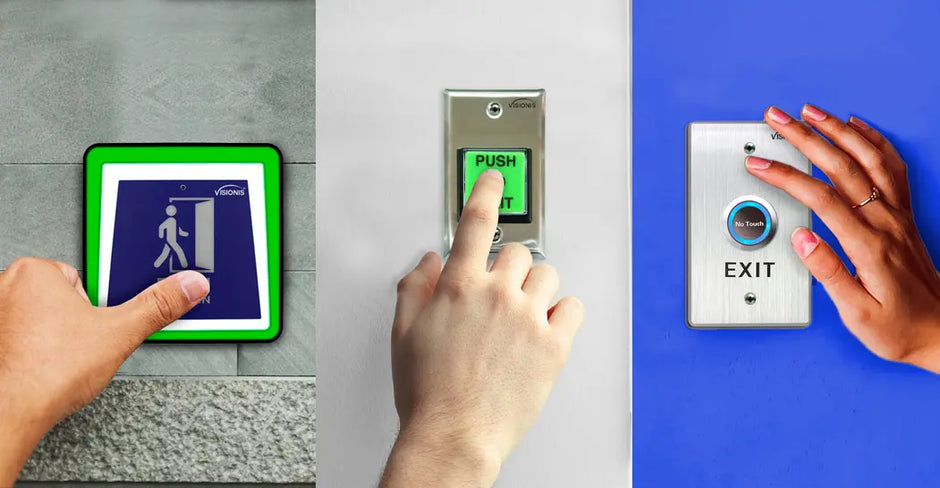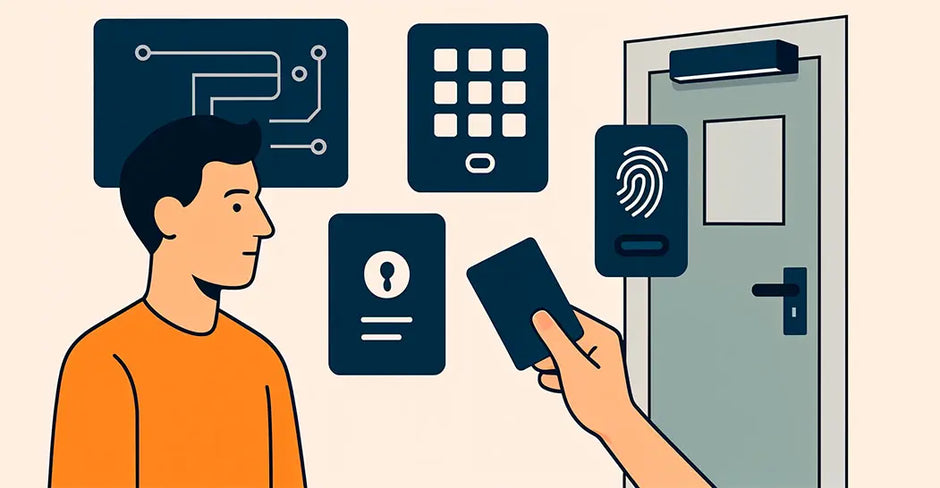Access control systems are a critical aspect of security in a wide range of settings, from office buildings and hospitals to airports and government facilities. However, traditional access control systems can be limited in their effectiveness, relying on outdated technologies and methods that may be susceptible to errors or breaches.
That’s where artificial intelligence (AI) comes in. AI is increasingly being used to enhance access control systems, providing more accurate and efficient security measures that can better protect people and assets.
In this article, we’ll explore the benefits of using AI in access control, potential concerns with AI in access control, governments using this technology right now, and the future outlook for AI in the access control industry. By the end of this article, you’ll have a better understanding of how AI is revolutionizing the way we approach access control and security.
Artificial Intelligence in Access Control
AI is being used in access control systems in a variety of ways, each with the goal of improving security and efficiency. One key use of AI in access control is through facial recognition technology. By analyzing unique patterns and features of a person’s face, AI-powered facial recognition systems can accurately identify individuals and allow access to secure areas without the need for physical keys or key cards.
Behavioral analysis is another area where AI is being used to improve access control systems. This technology uses machine learning algorithms to analyze user behavior patterns and identify anomalous or suspicious behavior. For example, if a person suddenly attempts to enter a restricted area without proper clearance, an AI-powered behavioral analysis system can alert security personnel to the potential threat.
The benefits of using AI in access control systems are numerous. Here are just a few:
1. Improved Accuracy

This is the VIS-FRIO Face Recognition device from VISIONIS
AI-powered access control systems are more accurate than traditional systems, reducing the risk of false positives or negatives. Biometric authentication using fingerprints, iris scans, or facial recognition is becoming more common in access control systems.
AI algorithms can process and analyze biometric data quickly, accurately verifying an individual’s identity and granting access to secure areas without the need for physical keys or key cards. Additionally, AI can detect and prevent spoofing attacks, where an attacker uses a fake biometric image to gain access to a secure area.
2. Faster Response Times
AI can process large amounts of data quickly, allowing for faster response times in security incidents. This can help security personnel to respond to threats more efficiently and effectively.
3. Automated Access Control Management
AI algorithms can automate many access control management tasks, including user enrollment, access level configuration, and permissions management. This reduces the workload for security personnel and minimizes the potential for errors.
4. Better Tracking and Analytics
By using AI to analyze access control data, organizations can gain valuable insights into who is accessing secure areas, when they are doing so, and how frequently. This can help organizations to better understand their security risks and make data-driven decisions to improve security.
5. Integration with other Security Systems
AI-powered access control systems can integrate with other security systems, such as video surveillance and intrusion detection systems. This provides a more comprehensive approach to security, allowing organizations to detect and respond to threats more effectively.

Overall, the benefits of using AI in access control systems are clear. As this technology continues to evolve and improve, we can expect to see even more innovative uses and benefits in the future.
Potential Concerns with AI in Access Control
While AI-powered access control systems offer many benefits, there are also potential concerns related to privacy and bias issues that must be addressed to ensure the fair and ethical use of these systems.
One concern is the privacy of personal data. AI-powered access control systems collect and process personal data, such as biometric information and user behavior data. There is a risk that this data can be misused, shared without consent, or stolen. Organizations must ensure that they have robust data protection policies in place, and that these policies are in compliance with applicable privacy laws and regulations.

Another concern is bias. AI-powered access control systems can be trained on biased data, leading to discriminatory outcomes. For example, facial recognition technology has been shown to be less accurate for people with darker skin tones, leading to a higher risk of false positive identifications. To address this, organizations must ensure that they use diverse training data and regularly test their systems for bias. They should also consider using AI explainability techniques, which provide insight into how the AI algorithm arrived at a decision, to detect and correct any bias.
To mitigate these concerns, organizations must also be transparent about their use of AI in access control systems. This includes providing clear information about what data is being collected, how it is being used, and who has access to it.
Organizations should also provide clear opt-out options for users who do not wish to have their data collected or used for access control purposes.
Finally, organizations should ensure that their AI-powered access control systems are regularly audited and reviewed by independent third parties to verify compliance with privacy and fairness standards. This can help to identify potential issues before they become problematic and provide reassurance to stakeholders that the system is being used ethically.
Companies and Governments Using AI in Access Control
There are a number of companies and governments that are currently using artificial intelligence (AI) in access control. Here are a few examples:

Amazon
Amazon’s facial recognition technology, Rekognition, is used by some law enforcement agencies in the United States to identify suspects and track individuals of interest.

©tykhyi/123RF.COM
Singapore Government
The Singapore Government has implemented an AI-powered facial recognition system in its Changi Airport to improve border control processes.

United States Department of Defense
The United States Department of Defense uses AI-powered security systems to protect its facilities, including access control and surveillance systems.

©aizuddinsaad/123RF.COM
Chinese Government
The Chinese government has implemented AI-powered surveillance systems, including facial recognition technology, for access control and security purposes in public spaces and government buildings.
These are just a few examples of the many companies and governments that are currently using AI in access control systems. As the technology continues to advance, it is likely that even more organizations will adopt AI-powered security solutions to improve the accuracy, speed, and effectiveness of their access control systems.
Future Outlook for AI in Access Control
The potential impact of AI on the access control industry in the coming years is significant. Here are a few potential ways that AI could change the access control landscape:
1. Enhanced Accuracy and Security
As AI technology continues to improve, we can expect to see even greater accuracy and security in access control systems. This could include more advanced biometric technologies, such as palm vein recognition or gait analysis, which are even harder to spoof than current biometric modalities. Additionally, AI algorithms could become more adept at detecting and preventing security threats in real-time, leading to a more secure and safer environment.

2. Greater Automation and Efficiency
With the ability to automate many access control management tasks, AI-powered systems could reduce the workload for security personnel and minimize the potential for errors. This could also lead to greater efficiency, with access control systems becoming more integrated with other security systems, such as CCTV or intruder detection systems, creating a more seamless security experience.
3. Greater Personalization and Customization
As AI algorithms become better at analyzing data, we can expect to see greater personalization and customization of access control systems. This could include tailored access control for specific user groups or dynamic access control policies that adapt based on the behavior of individual users.
4. Emotion recognition
AI algorithms could be used to analyze user facial expressions and detect emotions such as stress, anxiety, or aggression. This could be used to trigger alerts to security personnel or adjust access control policies based on the emotional state of users, creating a more secure and personalized access control environment.
5. Increased Adoption and Integration
As the benefits of AI-powered access control systems become more widely recognized, we can expect to see increased adoption and integration of these systems across a range of industries. This could include increased use in critical infrastructure, transportation, and healthcare, where security is a top priority.
Conclusion
In summary, AI is poised to have a significant impact on the access control industry in the coming years. From enhanced security and efficiency to greater personalization and customization, AI-powered systems offer a range of benefits for organizations. However, it is important that ethical and privacy concerns are addressed to ensure that these systems are used in a fair and transparent manner.







